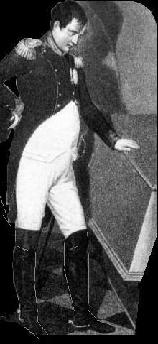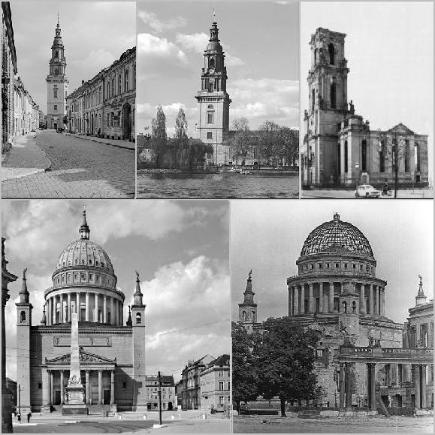As a city, Potsdam existed since about the 13th century. Sometimes called the “German Versailles,” it also had the status of England’s Windsor. It was the residence of the Prussian kings until 1918. Around the city there are a series of interconnected lakes and unique cultural landscapes, in particular the parks and palaces of Sanssouci, After the Edict of Potsdam in 1685, Potsdam became a center of European immigration, its religious freedom attracting persecuted people from all of Europe.
In 1701, the elector Friedrich III of Brandenburg, son of the Great Elector, adopted the name Friedrich I and the title “King in Prussia.” With the accession to power by the “Soldier King” Friedrich Wilhelm I in 1713, a new era began for Potsdam. It became a garrison town. The soldiers were billeted in townhouses which were built upon the king’s orders. In 1722, in order to end desertions and to ease the collection of taxes by enclosing the residential districts, a wall was built around the town and at this time, the Great Military Orphanage and the Church of the Holy Ghost were constructed, as well as the canal and the Court and Garrison Church.
Later, the city became a full residence of the Prussian royal family. The majestic buildings of the royal residences were built mainly during the reign of Friedrich the Great. One of these is his Sanssouci Palace designed by the king and Georg Wenzeslaus von Knobelsdorff in 1744. Other royal residences include the Neues Palais and the Orangery.
Nearly 44,000 French Huguenots established themselves in Germany, particularly in religiously tolerant Prussia. Potsdam’s French Church (Französische Kirche) was erected in the 1750s for the Huguenot community there, but it was said there was a French church in almost every town in Prussia. In 1700, it was estimated that every third Berliner was French and a significant proportion of Prussia’s population was French-speaking. The Berlin Huguenots preserved the French language in their church services for nearly a century until they, loyal to the land which had given them freedom, willingly shed it in protest of Napoleon’s occupation of Prussia in 1806-07.
Potsdam’s Garnisonkirche (Garrison Church) held the remains of Friedrich the Great for many years. On the walls were hung the battle-flags taken by Friedrich from Austria and Russia and it also had a collection of swords and lances placed among the flags; and at each of the four corners of the organ were drums and trumpets.
Speaking of the King, the cathedral of St. Hedwig was built by Friedrich the Great, who took his responsibilities seriously in regard to the Polish people under his rule. He not only spoke Polish himself, he also advised his successors to learn Polish, a policy they followeds. After he introduced the Prussian school system, regarded as the most modern in the world at the time, into the newly acquired lands, he had 750 schools built between 1772 and 1775. He insisted that both Protestant and Roman Catholic teachers be hired to teach in West Prussia, and that preferably both they and school administrators be able to speak both German and Polish.
Friedrich’s Polish friend Ignacy Krasicki, a poet as well as Bishop of Warmia and later Archbishop of Gniezno, officiated at the cathedral’s opening in 1773. The church was named after the patron saint of Silesia and Brandenburg, St. Hedwig of Andechs, and commemorated the arrival of Catholic Silesians who immigrated to Protestant Brandenburg and Berlin. Friedrich had especially warm feelings for Krasicki and looked to him for advise and council. Krasicki wrote the ‘Monachomachia’ to amuse the king. Their friendship at times created a difficult political situation for both the King and the poet-bishop. Shortly after Krasicki officiated at the opening of St. Hedwig’s Cathedral, he received a position with the Berlin Academy of the Arts, and his residences became centers of art and culture. Krasicki was mutually honored by the King of Poland with the Order of the White Eagle and by the King of Prussia with the Order of the Red Eagle. He died in Berlin and was eulogized in St. Hedwig’s Cathedral.
Protestant Nikolaikirche (Nikolai church) is one of the most important buildings in the era of German classicism. It was built in 1828 according to the plans of Karl Friedrich Schinkel with his pupils Ludwig Persius and August Stüler. The ground plan was laid out in the shape of a Greek cross, with one arm of the cross extended by a semi-circular apsis. The portal is supported by two columns and is reminiscent of an ancient temple. Although badly damaged by bombing, it was recently renovated. Unfortunately, the Heilig-Geist-Kirche (Holy Ghost Church) did not have a good ending. On May 8, 1747, Johann Sebastian Bach gave an organ concert here to an enthusiastic audience. In 1945 it was all but totally ruined and in 1974, the war-damaged church was finally torn down.


